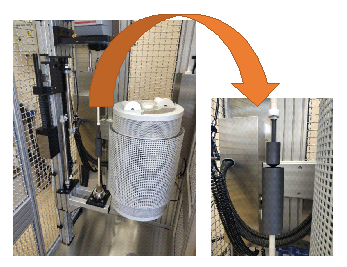
Effect of Al2O3 and CaF2 additives on the viscosity of conventional cryolite melts
Abstract
Keywords
Full Text:
PDFReferences
Kudryavtseva NT. Prikladnaya electrockimiya [Applied electrochemistry]. Moscow: Khimiya; 1975. 552 p. Russian.
Grjotheim K, Krohn C, Malinovsky M, Matiasovsky K, Thon-stad J. Aluminium electrolysis. Fundamentals of the Hall-Heroult process. 2nd ed. Dusseldorf: Aluminium-Verlag; 1982. 443 p.
Borisoglebskiy YuV, Galevskiy GV, Kulagin NM. Metallurgiya alyuminia [Metallurgy of aluminum]. Novosibirsk: Nauka; 1999. 438 p. Russian.
Haupin W. The influence of additives on Hall-Héroult bath properties. JOM. 1991;43:28–34.
Silny A, Chrenkova M, Danek V. Density, viscosity, surface tension, and interfacial tension in the systems NaF(KF) + AlF3. J Chem Eng Data. 2004;49:1542–1545. doi:10.1021/je0341965
Torklep K, Oye H. Viscosity of NaF–AlF3–Al2O3 melt mixtures. Electrochimica Acta. 1980;25:229–235.
Hertzberg T, Torklep K, Oye H. Viscosity of NaF–AlF3–Al2O3 melt mixtures. Selecting and fitting models in a complex system. In: Essential Readings in Light Metals: Volume 2 Aluminum Reduction Technology. Bearne G, Dupuis M, Tarcy G (Eds.). Cham: Springer. 2016. 19–24.
Votava I, Matiasovsky K. Measurement of viscosity of fused salts. II. Viscosity of molten binary mixtures on the cryolite basis. Chem Zvesti. 1973;27(5):582–587.
Nishihara K, Matsumura Y, Komatsu K, Noguchi H. Suiyokai-shi. 1964;15(6):311–315.
Robelin C, Chartrand P. A viscosity model for the (NaF + AlF3 + CaF2 + Al2O3) electrolyte. J Chem Thermodynamics. 2011;43:764–774. doi:10.1016/J.JCT.2010.12.017.
Bale CW, Bélisle E, Chartrand P, Decterov SA, Eriksson G, Hack K. CALPHAD: Comput. Coupling Phase Diagrams Ther-mochem. 2009;33(2):295–311. doi:10.1016/j.calphad.2016.05.002
Korenko M, Vaskova Z, Priscak J. Density, viscosity and elec-trical conductivity of the molten cryolite electrolytes (Na3AlF6–SiO2) for solar grade silicon (Si-SoG) elec-trowinning. Silicon. 2015;7:261–267. doi:10.1007/s12633-014-9214-2
Shramm G. Osnovy prakticheskoy reologii i reometrii [Fun-damentals of practical rheology and rheometry] Moscow: KolosS; 2003. 312 p. Russian.
Solheim A, Rolseth S, Skybakmoen E. Liquidus temperatures for primary crystallization of cryolite in molten salt systems of interest for aluminum electrolysis. Metallurgical and Materials Transactions B. 1996;27B:739–745.
Fellner P., Silny A. Viscosity of sodium cryolite-aluminium fluoride-lithium fluoridemelt mixtures. Berichte der Bun-sengesellschaft für physikalische Chemie. 1994;98:935–937.
DOI: https://doi.org/10.15826/chimtech.2021.8.3.06
Copyright (c) 2021 Anna Lyutina, Alexander Kataev, Alexey Rudenko, Olga Tkacheva

This work is licensed under a Creative Commons Attribution 4.0 International License.
Chimica Techno Acta, 2014–2025
eISSN 2411-1414
Copyright Notice







